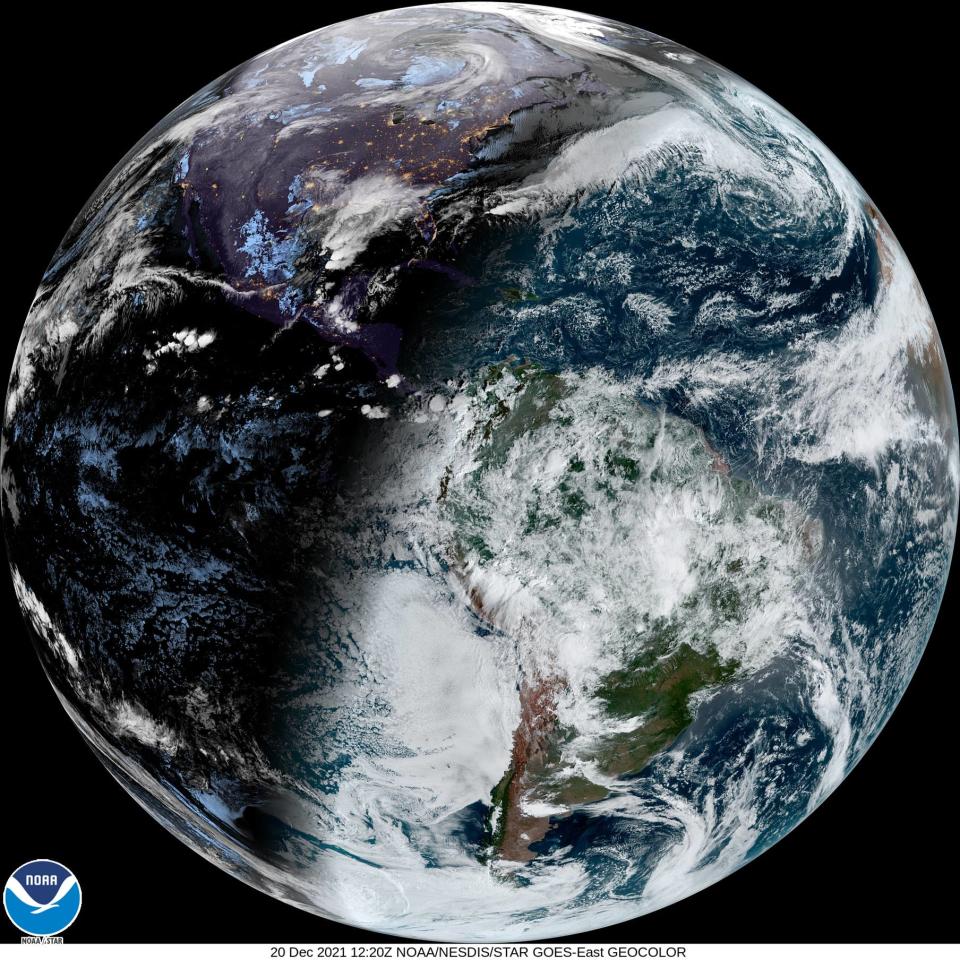6 things to know about the winter solstice, the day we say howdy to the coldest season
This December in West Texas is shaping up to be one of the warmest on record. No one could blame you for thinking that lately it feels more like a long autumn.
But winter has arrived, no matter how you define it — and we do have a couple of ways of looking at the season: Astronomers look at the position of Earth relative to the sun. Even under Johannes Kepler's laws of planetary motion, that day can vary from year to year, from Dec. 20 to Dec. 23.
Meteorologists like to keep consistent weather records; they start winter Dec. 1 and end the season on the last day of February.
From an astronomer's point of view, we will greet the season at 9:59 a.m. Tuesday, the day of the winter solstice. Here are six things to know about this annual event:
1. It will happen on the South Plains at 9:59 a.m.
The winter solstice isn't a day, it's actually a moment in time shared around the world when the planet is at a particular point in its annual orbit around the sun.
For those of us on the South Plains, that moment will be 9:59 a.m. Tuesday.
Keep two things in mind: Earth spins on a tilted axis and the planet is orbiting the sun at the same time.
We get winter when the Northern Hemisphere (where we live) is tilted away from the sun and as a result we get less daylight. The winter solstice is the moment when the North Pole is pointed the farthest away from the sun. During the summer solstice, the opposite occurs.

2. It happens on the year’s shortest day — or longest night.
The day is still 24 hours long, but the day of the winter solstice has the least amount of daylight. In Austin, daylight Tuesday will last only about 10 hours, 11 minutes. The daylight will be 3 hours, 54 minutes shorter than during next year’s summer solstice June 21, 2022.
3. It’s NOT when Earth is farthest from the sun.
OK, so: Another reason solstices and equinoxes are unreliable markers of time is that Earth orbits the sun in an oval instead of a perfect circle. But that also means Earth's distance from the sun can vary over the course of the year.
Earth is actually closest to the sun when the Northern Hemisphere faces away from the sun in winter. The upcoming year's perihelion, or when our planet will be closest to the sun, will fall on Jan. 4 and will happen at 12:52 a.m. that day. Earth will be about 91.4 million miles from the sun, or about 2 million miles closer than the average distance.
4. It’s not the year’s coldest day.
Because the oceans absorb so much of the sun’s energy and release it over time, a seasonal lag exists between the amount of daylight and air temperatures. So even though we get the least amount of daylight in December, it’s typically much colder in January or February. Similarly, summer daylight is longest in June, but July and August are normally hotter.
5. It’s not the equinox.
Like solstices, equinoxes happen twice a year, but they occur in the spring and fall. Try to think of the word “equal” with equinox because it is the moment when the sun spends the same amount of time at Earth’s equatorial plane, giving equal lengths to day and night.
6. Yule never believe this, but ...
The word “yule,” used to describe the Christmas season, is believed to come from the Norse word “jol,” which referred to a winter solstice festival. The Farmer's Almanac notes that many cultures around the world marked the passage of the sun with monuments — like Stonehenge in England and Mayan pyramids in Mexico — and with holidays, such as Saturnalia in ancient Rome. The winter solstice signaled a "rebirth" for the world as daylight hours grew again.
This article originally appeared on Lubbock Avalanche-Journal: 6 things to know about the winter solstice Tuesday

